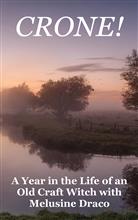
August: Yellow Glints the Harvest
Under the summer sun the mountains change colour and the guests start to arrive, which means outings and eating out in favourite places. One of the most popular of our days out is a trip to Cahir Castle – one of the largest castles in Ireland on an island in the River Suir. The 13th century castle was sited near an earlier native fortification known as a cathair (stone fort), which gave its name to the place. During a visit one of the Coven Elders and I were strolling by the river discussing certain developments that were in the offing and, as if in answer to our questions, a heron that had been perched on the castle ramparts flew off. Instead of flying over the bridge, the heron flew into one of the darkened arches and out the other side to perch on the edge of the weir – and provided an answer to our dilemma. An Old Craft witch needs to be on her contacts at all times or the message could have been overlooked.
Lammas is a most important Old Craft festival and if we study the amount of folklore attached to corn, bread and the harvest we can see why there are all the rural superstitions about corn-dollies, the last stook to be cut, and the Harvest Supper. Originally it was held on 1st August, or about halfway between the Summer Solstice and Autumn Equinox. Lughnasadh is the Gaelic equivalent marking the beginning of the harvest season (not just one day) and was widely observed throughout Ireland, Scotland and the Isle of Man, corresponding to other European harvest festivals such as the Welsh Gŵyl Awst and the English Lammas.
Lughnasadh is mentioned in some of the earliest Irish literature and has pagan origins, being named after the god Lugh. Much of the activities would have taken place on top of hills and mountains and involved great gatherings that included religious ceremonies, ritual athletic contests (most notably the Tailteann Games), feasting, match-making, trading and visits to holy wells. Evidence shows that the rites included an offering of the ‘first fruits’ – a feast of the new food, of bilberries, the sacrifice of a bull, and a ritual dance-play in which Lugh seizes the harvest for mankind and defeats the powers of blight. The naming also demonstrates why there are the differences in labeling the various festivals in the pagan calendar – since it depends on whether the group’s roots are Gaelic, Brythonic, Norse or Anglo-Saxon …
Tadhg’s Journal comments that it’s good to celebrate the time with a loaf of bread – home-baked or perhaps, something special bought from a local shop. “Maybe eat this special bread after your main meal one evening, with lashings of butter on it, and eat slowly, savouring each bite as an act of deep meditation, deep reverence and with deep thanks-giving. Rituals don’t have to be lavish and complicated. Simple ones, with intentionality go a long way. Why not invite family and friends along?”
Spell-Casting & Divination
It is believed to be unlucky to turn a loaf upside down, after helping oneself from it. If you turn a loaf of bread the wrong way you will turn someone out of the house, or bring ill luck.
The Witch’s Loaf Spell
Traditional witches are honour-bound by the ‘breaking of bread’ and the ill-wishing of anyone breaking that trust can be reversed by placing the offender’s name skewered with a rusty pin or nail, inside a new loaf. The loaf can then be fed to carrion birds (making sure they cannot injure themselves on the nail); or burned in a very hot oven making sure it is placed upside down.
August is also the time for local agricultural shows that attract people of all persuasions, for this is where we can meet sympathetic folk with communal interests and expertise. The County Shows are much more of a tourist attraction, but they provide a great day out with something for everyone. Local events are often one of the highlights of the farmers’ calendar where they can indulge themselves in the pleasures of the stock ring without the mucking out, and have a little tipple in the beer tent. They can inspect agricultural machinery they can’t afford, and have a little tipple on the trade stands.
There are all sorts of local produce to sample, including local cheeses, sausages, home-made pies and pickles, with the ‘Best of Show’ often destined for the local butcher’s slab come Yule. Despite the predominantly agricultural slant, the fairs provide a most enjoyable day out for all the family and offer the opportunity to rub shoulders with local people in a party atmosphere that even the most persistent rain can’t dampen. On a more local level the fair will be a one or two day affair, somewhere between a County Show and village fete and often a lot more fun.
I can recall one show where the local mink hounds were billed as putting in an appearance in the show ring. The wagon backed into the area, the huntsman turned out in royal blue with red gaiters blew his horn and the hounds tumbled out on to the grass. And that was the last we saw of them. They picked up a scent and hurtled out of the ring, out of the show-ground and disappeared completely. There was a lot of yelling and horn-blowing, but we never saw them again for the rest of the day!
And talking of hounds…
Feast of Cromn Dubh
Originally a pre-Celtic god of the harvest and the Underworld, Cromn Dubh walks the earth accompanied by two black dogs. This suggests the origins of the diverse folklore legends of those many large black, mythological dogs that have roamed the British countryside for centuries. Perhaps his ancient feast day on the 7th August is a good day to give your canine companion a special treat in honour of the harvest, when dogs would have a field-day chasing prey from the corn cutting.
Being a dog person and surrounded by dogs, it’s perhaps not surprising that I turned my hand to writing Aubry’s Dog: Power Animals in Traditional Witchcraft (2013) since I draw a tremendous amount of magical energy from my pack. The title came from an entry in Brewer’s Dictionary of Phrase & Fable that told the story of how Aubry of Montdidier was murdered in 1371, in the forest of Bondy. His dog, Dragon, showed a most unusual hatred to a man named Richard of Macaire, always snarling and ready to fly at his throat whenever he appeared. Suspicion was excited, and Richard of Macaire was condemned to a judicial combat with the dog. He was killed, and in his dying moments confessed the crime. A picture of the combat was for many years preserved in the castle of Montargis and ‘Aubry’s Dog’ became an expression for loyalty.
Again, dogs and man became companions a long time ago, and the dog’s attributes as a power animal include speed, agility, courage, protection, justice, nobility and loyalty. Dogs’ teeth are useful items to add to the contents of a witch’s pouch. Nevertheless, I think this is probably why I have no great love for Hecate, since she demands the sacrifice of dogs and puppies at every conceivable opportunity – perhaps she should re-locate to South-East Asia!
The Initiation
Our place of initiation is an almost inaccessible passage tomb whose entrance faces north-west in line with the mid-summer sunset. It is part of a vast sacred landscape dating back to the Bronze Age, signifying strong religious ritual dating back as far as 3,500 BC. Here our would-be Initiates make the long climb up to the stones at dusk – the time between times – to spend the night entombed in the ancient grave. This year the rite involves a husband and wife magical partnership and it will be interesting to see what their reactions are when they finally return to the cottage. Needless to say, the rite of initiation can be terrifying and our tomb generates some extremely powerful energies at any time – which is why it is said you either come out dead, mad or enlightened.
Having successfully completed the rite, the new Initiate is under no obligation to discuss the experience but I’ve always found that once the numbness wears off (and after a bottle of champagne to celebrate), they do wish to talk. There are so many impressions and questions that it’s usually breakfast time before the adrenalin starts to settle down. Initiation has a lasting effect and can take months before any degree of normality returns to the participant’s life.
I’m often asked by new Initiates: “What happens now? What comes after Initiation?” The answer is, of course, a simple one. Having come to terms with the spiritual and emotional changes that take place, the next step is the understanding and acceptance that we know nothing! This is the place of new beginnings and where we start learning anew – but from an altered level of consciousness. The difference is that from this perspective everything is viewed from a completely unparalleled standpoint, and the things that register in our inner-being are not the sensations we experienced before we stepped through the portal. Each experience is unique to the individual, and the visions/sensations encountered during those long hours in the tomb reflect the intensity of the faith each of us holds in our heart.
Unfortunately, many Initiates appear to think they are now Masters of the Magical Universe and will pontificate about anything and everything of a magical nature, as though the experience has given them the gift of omniscience.
- A worthy Initiate will often return to their mentor, embarrassed and with a feeling of inadequacy when their step through the portal quickly reveals the scant knowledge of their position! This is as it should be. Initiation is a form of awakening – it is the beginning of a journey – not the end. They approach the new experiences with all the delight of a child discovering a new and more exciting world for the first time. Then they start to question … and question …
- An unworthy Initiate reacts at though they have passed the finishing post and entered the winners’ enclosure to have all honours and laurels heaped on their head. They frequently sit in judgement on those less knowledgeable and court a sycophantic admiration from those ‘less advanced’ than themselves, not realising their attitude is, in fact, a magical regression. They can’t be ‘un-initiated’ but since they make no attempt to further their studies, they will remain in this state of magical limbo possibly for the rest of their lives. Where all is said and done: magic is only a step on the Pathway to the Mysteries and there is a long way to go before we reach that ultimate state of grace.
By teaching others we also learn from the teaching process because we can now view situations by looking through other people’s eyes, and a good student will constantly ask questions that are not contained in the standard lessons. If Initiates approach students from a lofty position of superiority, or develop a patronising tone, it will not encourage new people to follow the Path. That is why one of the stages of preparation is to read through the lessons, starting from the first to see where we are now and how far we’ve come – because it is easy to forget what we were like in our early days. If nothing else, Initiation into the Mysteries should teach us to be humble.
For example, I chronicled my own experiences in Starchild: a Re-Discovery of Stellar Wisdom’ (2000). It had taken over ten years to write and encapsulated what I’d learned on the path up to and beyond Initiation into the Mysteries – it was a catharsis of all the jumbled and fragmentary magical and mystical information collected in the brain, purged and then drawn together to make a coherent whole. It was, I thought at the time – either through arrogance or ignorance – my Magnum Opus. Sixteen years later I put the finishing touches to Starchild II: Lights of the Veil, which demonstrated that the path of the Initiate is never ending in terms of learning. Starchild II did not render Starchild I obsolete – it was an extension of that original understanding – an affirmation, if you like. The first book was created out of the wisdom of the ancient Egyptian world and while the second emerged from more recent wider-reaching discoveries, it has revealed how our mystical roots have sprung from different strains of the same panspermiac seed.
Perhaps, however, the simplest and most profound comment on the subject comes from John Fowles in his novel, The Magus: “Mystery has energy. It pours energy into whoever seeks an answer to it. If you disclose the solution to the mystery you are simply depriving the other seekers of an important source of energy … [Man] needs the existence of mysteries, not their solution”. Who knows … ten years down the line there might even be a Starchild III!
I often wonder about some of the people who read my books and who have no compulsion in making scathing comments about the content. I don’t expect everyone to like my style, which can often come across as slightly abrasive, but I don’t appreciate being insulted or belittled by those with scant experience in the ways of the witch. It’s usually at this point I will repeat those famous words of Aleister Crowley who was no stranger to a bad press:
Test the average man by asking him to listen to a simple sentence which contains one word with associations to excite his prejudice, fears or passions – he will fail to understand what you have said and reply by expressing his emotional reaction to the critical word
For example, one reviewer for Traditional Witchcraft for the Seashore (2012) complained that a spell ‘suggests throwing a plastic container into the sea and letting it go where the tides takes it’, followed by a lecture on ecology – which showed that the complainer hadn’t read the passage properly, or more importantly, even remotely understood its content.er with your charm and letting it go where the tides takes it . I'm wondering what you are thinking when you recommend throwing anything plastic in the ocean ? We have enough plastic refuse in our Oceans . This is not a very eco friendly recommendation for spell work . I urge you to re think this particular spell in subsequent editions.
I had included this charm of ‘confusion and chaos’, i.e. a curse that involved throwing a small medicine bottle into the fast current of an estuary to let the natural currents carry it where it would. I pointed out that there was no way of retrieving this charm, so there were to be no knee-jerk reactions when making the decision to cast it. And that if came back on the returning tide, then if must be retrieved and destroyed since the ‘powers that be’ had rejected the appeal. I also explained that retrieval could be extremely dangerous, so there needed to be sufficient justification for casting the charm [curse] in the first place or there could be serious repercussions, and the sender would only have themselves to blame.
The complainer had made several adverse comments (including an Amazon review) about the casting of small plastic medicine bottles into the briny ... but nothing at all about cursing, or showing any understanding of the positive-negative aspects of using this method of casting a curse. Curses generally have a much greater environmental impact than small plastic bottles and the whole point of the exercise was missed because the words: ‘throw a small medicine bottle into the current’ excited the passions of the reader.
There were enough safeguards in the text to make even the most inexperienced of readers stop and think whether it was worth the effort, or risking the dangers of the sea in order to get even with some real or imagined enemy. And if you’d got it wrong and the sea returned the bottle, then there was even further risk to life in attempting to retrieve the offending container. And it was hardly envisaged that thousands of junior-league pagans would be cursing and hurling plastic bottles into the briny just because it was written in a book! All magic has an element of risk to the practitioner and time would be better spent making sure they understood what sort of spell they were undertaking – and if you don’t understand it, then don’t do it!!
The nicest thing, however, that’s ever been said about the Traditional Witchcraft series is that they have the feel of a textbook, written by a poet. I confess, I’m no poet but I often find that poetry contains its fair share of magical truths and use it frequently to illustrate a point, or even to use its rhythm to drive home a spell – or curse, as in The Gage adapted from Walter de la Mare’s poem of that name in By Spellbook and Candle: Cursing, Hexing, Bottling & Binding (2012).
The Gage offers an example of an extremely powerful curse but again we must fully understand what we’re doing before implementing this form of magical retribution. For example:
O mark me well!
For what my hound befell
You shall pay twenty-fold,
For every tooth
Of his, i’sooth,
Your life in pawn I’ll hold.
Here we are bringing down a curse that is twenty times the number of teeth in the dog’s mouth, which for an average healthy, adult dog is around 42! This means that the magical practitioner must weigh in the balance whether the punishment fits the crime. After all, it would be rather extreme if someone had merely given your dog a clout for attempting to ravish their prize-winning bitch! That said, this curse used against any act of cruelty against a dog – intentional or unintentional – might be seen to be justifiable and one I would not hesitate to use. Cursing, like most areas of magic, is a question of personal responsibility and/or morality but once thrown it cannot be retracted.
What is a Magical Truth?
This is a term used to describe a profound piece of information, wisdom or philosophy that is pertinent to all magical paths and traditions, regardless of origin or ethnic background. These are usually discovered in non-magical books of both fiction and non-fiction. As Allen Bennett observed it’s that moment in reading when you come across something … “a thought, a feeling, a way of looking at things – which you thought special and particular to you. Now here it is, set down by someone else, a person you have never met, someone even who is long dead. And it is as if a hand has come out and taken yours.”
The writer probably hasn’t the remotest connection to Craft, ritual magic or mysticism but suddenly there is this illumination, an idea that triggers your own train of thought along magical (or mystical) highways and byways you’d never thought to travel. That’s why I love Chet Raymo’s books because they are full of magical truths from the pen of a most unlikely source: a Catholic school-educated Professor of Physics and Astronomy. In fact, my recommended reading lists rarely contain titles by magical practitioners because as St Bernard of Clairvaux pointed out: “More things are learned in the woods than from books; trees and rocks will teach you things not to be heard elsewhere.”
Another Magical Truth that we have all probably experienced at one time or another, is the inability to move forward, no matter how hard we try – and many years later we come to the understanding that we have come up against an insurmountable barrier that only Fate will remove when she is good and ready! This train of thought was also experienced by Aleister Crowley and he recorded it in his Confessions:
Throughout my life I have repeatedly found that destiny is an absolutely definite an inexorable ruler. Physical ability and moral determination count for nothing. It is impossible to perform the simplest act when the gods say ’No’. I have no idea how they bring pressure to bear on such occasions; I only know that it is irresistible. One may be wholeheartedly eager to do something which is as easy as falling off a log; and yet it is impossible
Fate and the future may not be cast in stone – but they are not a push over, either! When this kind of mysterious barrier is encountered the best thing we can do is retreat from the field and forget about going on until the ‘powers that be’ are good and ready to permit it.
August is always a pleasant time in the Glen and I try to take the month off – weather permitting. It’s a time for thinking and relaxing on the sun-lounger with a Pimms and a floppy straw hat, plotting the next book, or whatever I have in mind for the garden. So far, this year has produced that large gravelled expanse to conceal waste-ground that was neither use nor ornament at the side of the cottage. With the clever use of painted wooden pallets and colourful pots of shrubs it no longer resembles a pub car-park but has been transformed into a pleasant sheltered Italian-styled terrace with a fabulous (but rarely seen) view of the mountain range. It is low maintenance and a highly effective way of utilising poor land that can now be used as a sun-trap.
There are now eight swallows’ nests in the kennels and barn which should compensate for the three lonely birds who managed to return out of the forty plus that left here the previous autumn. There are a couple of late broods still left to fledge and I hate the thought that these brave little birds stand no chance of surviving that long flight to Africa and will undoubtedly perish along the way. In the meantime, I push these dark thoughts aside and enjoy the noise and bustle of those who are growing stronger with each passing day. It’s Nature’s way but it’s still sad to think of all those losses.
Paying a little bit of homage to my Shinto upbringing I observe the ceremony of Toro Nagashi in which lanterns lit with candles are set afloat in memory of the dead. This ancient custom takes place at the end of the festival of Obon in mid-August. The spirits of the departed loved ones (the Ancestors) are said to return for the period of Obon; they are sent back to the spirit world in this sombre and moving ceremony of floating lanterns. I don’t have access to open water so I put tea-lights in every glass container I can muster and the effects after dark are truly spectacular. Then the idea drifts in on the night breeze that I should use another small area of rough ground at the rear of the cottage and create a private Japanese meditational garden for myself! …
Earth Mysteries and Magic
The terms ‘gateways’, ‘portals’ and ‘doorways’ speak for themselves, and as a witch’s magical ability develops these psychic ‘gateways’ will begin to open – maybe in one, or even several directions simultaneously. Personal advancement along the Old Craft path depends on an individual’s willingness to pass through or stay put, since these gateways open as a result of personal progress – serving as an indication that the time has come to move on and to climb to the next level.
Sometimes this transition can be difficult and painful but in magical learning everything has a reason (and a price!), so we must never ignore the opportunity, no matter how strange or vague it feels. The price of an Old Craft practitioner’s progress can be exacting but I believe the end result is well worth it; to ignore it will only result in personal loss (in terms of both spiritual and mystical development). In time, the same situation will return and the trial begins all over again. If the opportunity is not taken, it may be many years along the line before it occurs again, in which case there are many years lost in an individual’s progress as it will be akin to starting anew; or it may not occur again in this lifetime.
Gateways or portals can appear in the Circle; during meditation; or in a dream, but we should not be afraid of these blinding flashes of inspiration, as they only appear when the ‘powers that be’ feel that we are ready for them. For an experienced witch it may be a boot in the bustle to suggest they have spent long enough at a particular level and that it is time to take the next step. Not taking the chance on these new openings will be the individual’s loss, since those who have chosen not to pass through these gateways, even after many years of practice, remain at exactly the same level as when they first began. Their magic and understanding has never altered; their progression halted due to their own fear and misunderstanding. They have tried to batter down the door for years without success; the true witch finds that the door swings open at just the lightest touch of a finger when the time is right.
Magically speaking, passing through the portal also brings awareness that there are all manner of other different currents and movements on the planet that affect us on a deeper magico-mystical level, as I observed in Traditional Witchcraft and the Path to the Mysteries (2015). Let us also consider for a moment the comment made on television by British astronomer and physicist Professor Brian Cox that every blade of grass has 3.8 billion years of history written into it. Or what we often blithely refer to as ‘earth energy’ that can produce a mild tingling sensation, which sets the pendulum swinging; or a burst of warm energy in our hands and feet. But do we stop to think that this could be caused by the swirling molten layer under the Earth’s crust, creating the electro-magnetic field that surrounds the planet by the spinning outer crust around the solid part of the inner core? Or is our Elemental Earth just a quiet ramble in the countryside and a container of sand marking the northern quarter?
We may sit meditating by a rippling stream, watching the sunlight dance in the water as it trips over the stones and pebbles in its path – but do we allow our minds to explore the greater picture of where that crystal clear water comes from? Do we realise that this stream began its brief chapter of life being drawn up as vapour from the ocean and falling as rain on the hills and mountain sides, before flowing down into the river valley, bringing rocks and stones tumbling in its wake? Do our magical energies focus on the stream; the rainfall on the mountain; or the ocean? Are we constantly aware of the force of that water-flow throughout the seasons – the spring floods, the summer drought, the clogging of the channel with autumn leaves, and the frozen surface in winter? Or does our concept of Elemental Water begin and end with the symbolic bowl of tap water marking the western quarter of our magic Circle?
Similarly, nothing on the planet can live without clean, breathable air but the witch needs to think beyond soft summer breezes and rainbows after a spring shower. Air is the stuff from which tornados and hurricanes are made; it brings puffs of cumulus cloud or a billowing thunderhead some ten miles high; not to mention the thousands of feet high dust storms that are created when a monsoon collides with dry air currents above it; or the sirocco, the Mediterranean wind that comes from the Sahara and can reach hurricane speeds. Or is our Elemental Air merely the smoke from a perfumed joss stick or bowl of incense marking the eastern quarter in our magical workings?
Fire, even in its most modest form, has the capacity for destruction – a box of matches in the hands of a child, a fallen candle, or a carelessly discarded cigarette. On a grander and more epic scale, we are well acquainted by television coverage of devastating wildfires destroying anything that stands in its path, the eruption of a volcano, or the power of solar winds that reach out from the sun to interfere with electronic equipment here on Earth. Or is our contact with Elemental Fire restricted to a candle burning at the southern quarter of our Circle?
These, for example, were just some of the lessons taught by Bob and Meriem Clay-Egerton in the Coven of the Scales. That it was not necessary to rely on group dynamics, psycho-drama, ritual, Circle casting, chanting and dancing to generate magical energy because it is there, all around us on a permanent basis. It means that a natural witch can be on his or her contacts in seconds; knowing what type of energy, or ‘witch-power’ is needed to cure a headache, or channel the strength to walk the death-path with confidence after being diagnosed with a terminal illness. It really is a belief that can move mountains – if the application is right – and all witches draw on this natural energy to cause change through the application of Will.
In more simplistic terms, ‘witch-power’ is similar to the energy raised by Tai Chi – and that is widely used within art and sport without any magical significance whatsoever. It is a perfectly natural energy or force that can be harnessed or tapped into on a daily basis – to a greater or lesser extent. A true witch can generate the magical powers necessary by channelling this natural energy from the natural world – in its widest possible sense. Coven working produces the same energy by artificial means via psycho-drama and group dynamics. Old Craft uses both methods, of course, but if a solitary witch needs to be instantly on his or her contacts, then it could be a long wait between coven meetings.
The Kitchen Journal
This simple cake was quickly prepared when time was pressing at the time of the harvest. Traditionally the cake or loaf was made from flour ground from the first cutting from the field. This is a time for thanksgiving and contemplation of the past year’s work, symbolised by the season [A Witch’s Treasury of Hearth & Garden].
The Lammas Cake
8 oz self-raising flour with 1 teaspoon mixed spice
5 oz castor sugar and 5 oz butter
6 oz currants
6 oz sultanas
2 oz chopped peal
2 eggs beaten with 6 tablespoons milk
Mix flour and spices. Beat butter and sugar to cream. Beat eggs and milk together. Alternatively stir in flour and egg/milk mixture to the butter and sugar a little at a time. Add fruit and mix thoroughly. Bake for 2½ hours at Gas Mark 5 (350F/180C) for 1 hour, then at Gas Mark 2 (300F/150C).
Circle Working: Harvest Magic
The ritual observance for the month of August should reflect the spiritual quality surrounding harvest time and the ritual for August should be a celebration of the good things that have happened during the year. Lammas or Lughnasadh is a sympathetic magical ritual designed to guarantee that there would be enough food during the winter, by displaying and eating the finest of the harvest. It is a time for consideration of matters concerning money and to think of the older members of the family. A casual open air supper of cheeses, pate, pickles and fresh bread would be a simple way of observing the festival, even if your company isn’t necessarily made up of Craft people. Share some of your bounty with your guests in the form of home-made jams, pickles and preserves.
CRONE! by Melusine Draco is published by Ignotus Press UK and available direct from the printer as a special price. ISBN: 9781788760010 : Paperback : Pages: 216 : Published 21 September 2017
https://www.feedaread.com/books/CRONE-9781788760010.aspx

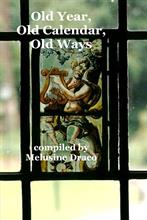

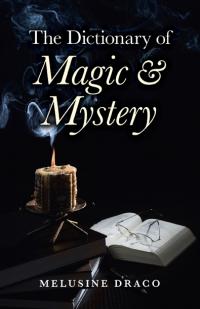

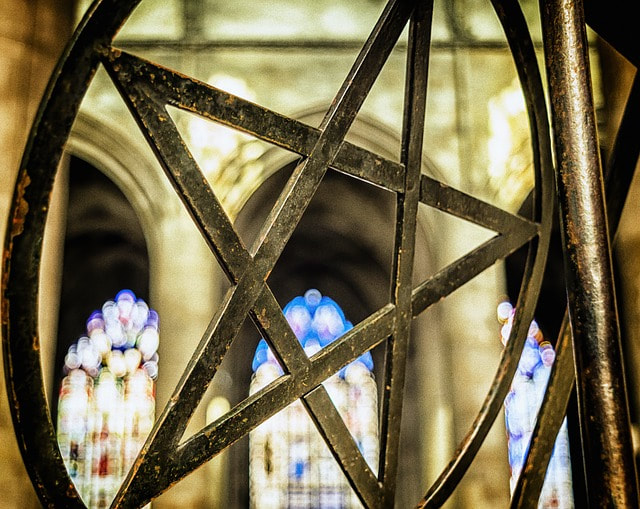
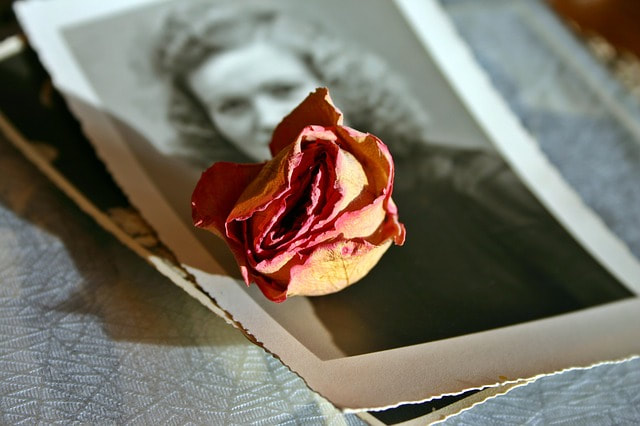
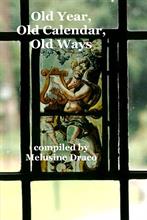

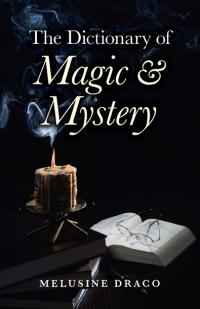

 RSS Feed
RSS Feed